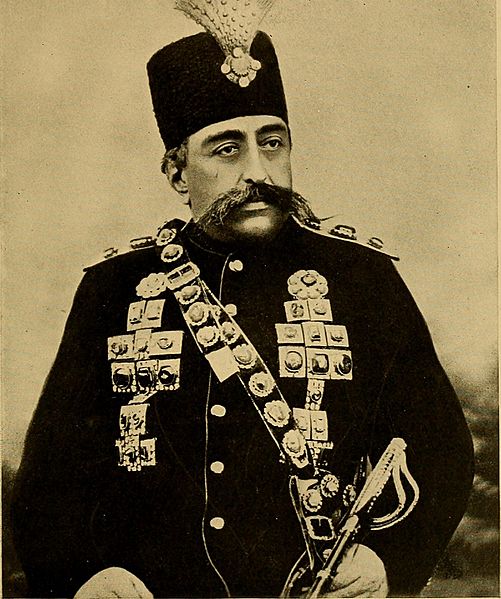Image: Persia past and present; a book of travel and research, with more than two hundred illustrations and a map (1906) (14763794285)

Description: Identifier: persiapastpresen01jack (find matches) Title: Persia past and present; a book of travel and research, with more than two hundred illustrations and a map Year: 1906 (1900s) Authors: Jackson, A. V. Williams (Abraham Valentine Williams), 1862-1937 Subjects: Zoroastrianism Publisher: New York, The Macmillan Company London, Macmillan & Co., ltd. Contributing Library: The Library of Congress Digitizing Sponsor: The Library of Congress View Book Page: Book Viewer About This Book: Catalog Entry View All Images: All Images From Book Click here to view book online to see this illustration in context in a browseable online version of this book. Text Appearing Before Image: radise, which has come to usfrom Persian through the Greek, while gul and bulbul, thePersian nightingale and rose, are familiar to all readers ofEastern poetry. The title of Persian literature to a place among the greatliteratures of the world is a recognized one, and it is in thisdomain perhaps that Persia makes the greatest claim upon ourinterest. In age the Avesta and the Old Persian Inscriptionscarry us back at least to the sixth century before Christ andpossibly earlier; the Pahlavi literature belongs to the Sasanianperiod from the third to the sixth century after Christ; andthe Modern Persian began within the last thousand years. Itsprang up a century or two after the Arab conquest as a re-naissance movement with the revival of the old national feeling;and this period is certainly the most interesting of all. Someknowledge of Firdausi, Saadi, and Hafiz belongs to true cul-ture, and Omar Khayyam has become an English classicthrough FitzGeralds version. The less-known names of the Text Appearing After Image: His Royal Highness Muzaffak ad-Din, Shah of Persia PERSIAN LITERATURE 31 romantic poetic Nizami, the dervish Jalal ad-Din Rumi, andthe mystic Jami (d. 1492), the last classic poet of Persia,should be mentioned as deserving to be known to lovers ofliterature. Little space remains for writing about the influence of Persiaupon our own poetry. Persia was hardly known to Englandbefore the sixteenth century, yet Chaucer alludes to Persianblue, pers, in the Prologue. Among the Elizabethans, Pres-ton dramatized the story of Cambises, Marlowe has Persiannames and Persian scenes in his Tamburlaine^ and Shaksperealludes to Persian attire in King Lea7\ to a Persian prince in Merchant of Venice^ and to a voyage to Persia in hisComedy of Errors. Milton summarizes the early history ofPersia in the third book of his Paradise Regained, besidesreferring to Ecbatan, Hispahan, Tauris, and Casbeen inParadise Lost. Shelley appears to have a faint reminiscenceof the pillared halls at Persepolis in his Alast Note About Images Please note that these images are extracted from scanned page images that may have been digitally enhanced for readability - coloration and appearance of these illustrations may not perfectly resemble the original work.
Title: Persia past and present; a book of travel and research, with more than two hundred illustrations and a map (1906) (14763794285)
Credit: https://www.flickr.com/photos/internetarchivebookimages/14763794285/ Source book page: https://archive.org/stream/persiapastpresen01jack/persiapastpresen01jack#page/n96/mode/1up
Author: Internet Archive Book Images
Permission: At the time of upload, the image license was automatically confirmed using the Flickr API. For more information see Flickr API detail.
Usage Terms: No known copyright restrictions
License: No restrictions
License Link: https://www.flickr.com/commons/usage/
Attribution Required?: No
Image usage
The following page links to this image:

